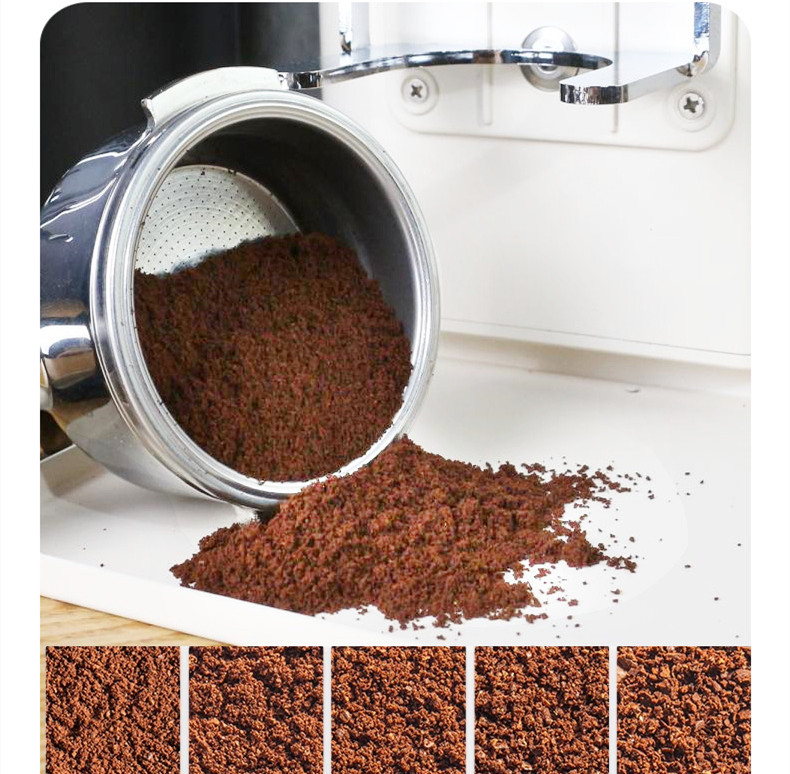The Italian coffee grinder achieves extremely fine grinding mainly by relying on its cutter head structure, scale adjustment mechanism and precise control of extraction parameters. The following is a specific analysis:
The structure and working principle of the cutter head
Italian coffee grinders typically feature large-sized knife discs (such as those over 65 millimeters) and structural designs like flat knives, conical knives or ghost teeth. Its working principle is to cut coffee beans into extremely fine powder through a high-speed rotating cutter head. The smaller the gap between the cutter heads, the finer the coffee powder particles ground, which provides a physical basis for extremely fine grinding.
Scale adjustment mechanism
The grinding degree of the grinding machine is adjusted by the scale dial. The scale value is inversely proportional to the fineness of the powder – the larger the scale, the coarser the grinding particles. The smaller the scale, the finer the powder. For example, the grinding degree of espresso usually needs to reach a fineness close to that of flour. In actual operation, the grinding degree needs to be dynamically adjusted according to the extraction time: if the extraction time is too short (such as less than 25 seconds), it indicates that the grinding is too coarse and the scale needs to be refined. If the extraction time is too long (exceeding 30 seconds), the scale needs to be adjusted to be coarse. This adjustment method ensures the precise control of grinding fineness.
The influence of extremely fine grinding on extraction
Extremely finely ground coffee powder has fine particles and a dense powder layer. The resistance to water flow increases, thereby prolonging the extraction time. This helps to fully extract the flavor substances in coffee, making the espresso rich in flavor and fat. However, excessive grinding may lead to over-extraction, resulting in a burnt and bitter taste. Therefore, it is necessary to make comprehensive adjustments in combination with parameters such as extraction time and the ratio of powder to water.
Key parameter control
The standard ratio of powder to water for espresso is 1:2 (for example, extracting 36 grams of coffee liquid from 18 grams of powder).
Extraction time: The ideal extraction time is 25 to 30 seconds. If the time is too short, it indicates that the grinding is too coarse. If the time is too long, the grinding will be too fine.
Flow rate regulation: Control the water flow rate by adjusting the grinding degree. If the flow rate is too fast, it will lead to insufficient extraction and the coffee will be too sour. If the flow rate is too slow, over-extraction is likely to occur, resulting in a burnt and bitter taste.
Debugging and Optimization
Minor adjustment: Each time the grinding degree is adjusted, it is recommended to make fine adjustments in units of 0.1 to 0.2 divisions to avoid extraction imbalance caused by excessive adjustment.
Environmental adaptability: Changes in humidity can affect the degree of caking of coffee grounds, thereby influencing the extraction effect. In a humid environment, it is necessary to enhance the uniformity of the fabric powder to avoid the channel effect.
Equipment maintenance: Regularly clean the cutter head and replace worn parts to ensure uniform grinding. When the clearance of the cutter head changes due to long-term use, the grinding degree needs to be recalibrated.


